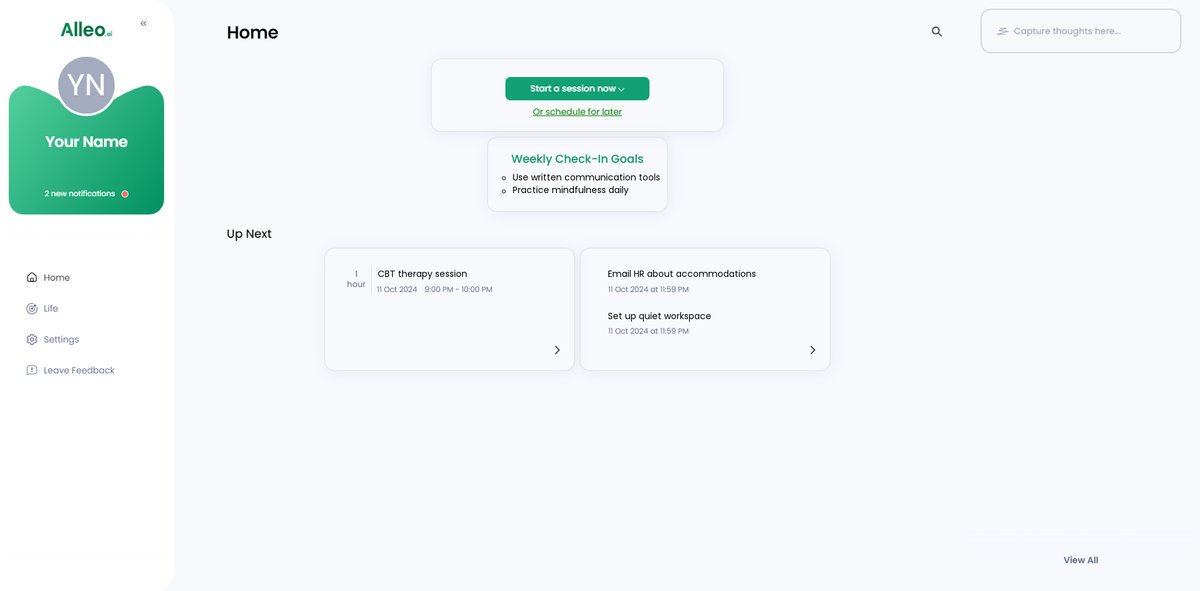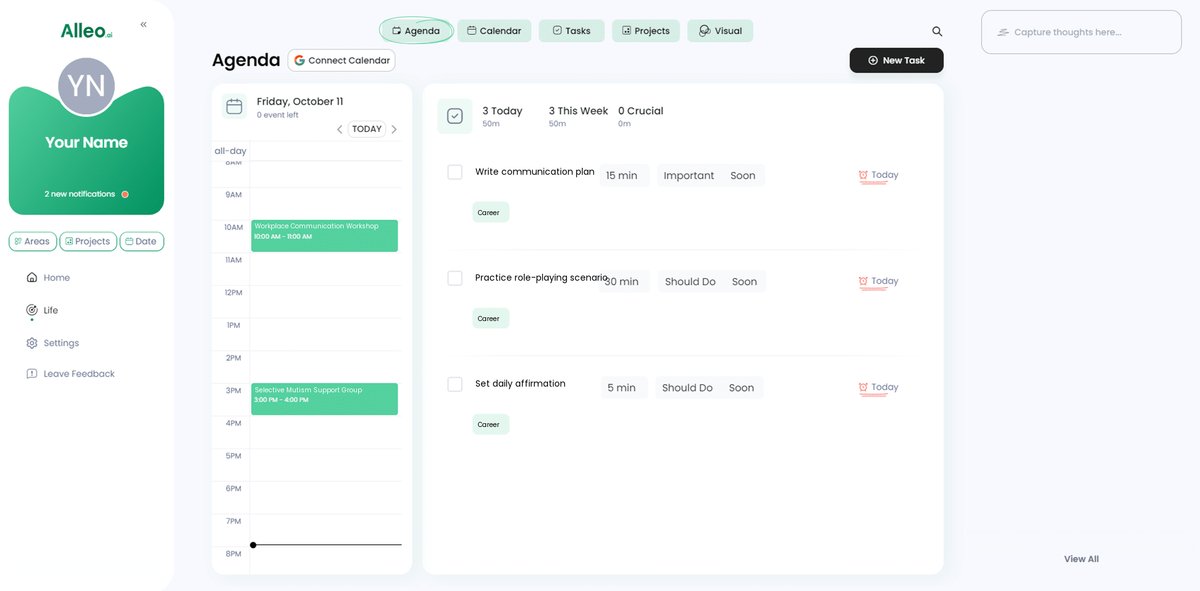7 Proven Strategies for Professionals with Selective Mutism to Improve Workplace Communication
Are you struggling to make your voice heard at work due to selective mutism? Effective selective mutism workplace communication strategies can be crucial for professional success.
As a life coach, I’ve helped many professionals navigate these challenges. I’ve seen firsthand the impact selective mutism can have on career progression and workplace relationships. Workplace accommodations for selective mutism and nonverbal communication techniques can make a significant difference.
In this article, you’ll discover strategies to improve workplace communication for professionals with selective mutism. You’ll learn about alternative communication methods, supportive environments, and personalized strategies. We’ll explore anxiety management in professional settings, assistive technology for selective mutism, and cognitive behavioral therapy for workplace communication.
Let’s dive in and explore selective mutism workplace communication strategies that can enhance your professional life.

Understanding the Challenges of Selective Mutism in the Workplace
Navigating the workplace with selective mutism can be incredibly challenging. Many young professionals struggle to express themselves in meetings or casual interactions, impeding their career progression. Implementing effective selective mutism workplace communication strategies is crucial for success.
This issue often leads to feelings of isolation and frustration. Untreated selective mutism can severely impact workplace relationships and hinder professional growth. Exploring workplace accommodations for selective mutism and nonverbal communication techniques can help alleviate these challenges.
In my experience, several clients report feeling overwhelmed by the need to speak in social settings. The fear of being misunderstood or judged can be paralyzing. Anxiety management in professional settings becomes essential for those with selective mutism.
Addressing these challenges is crucial. Building confidence and finding supportive strategies can significantly improve your professional life. Considering options like speech therapy for adults with selective mutism or cognitive behavioral therapy for workplace communication can be beneficial.

Essential Steps to Improve Workplace Communication for Selective Mutism
Overcoming this challenge requires a few key steps. Here are the main areas to focus on to make progress with selective mutism workplace communication strategies.
- Implement alternative communication methods: Utilize written communication tools and visual aids, including digital communication tools for selective mutism.
- Create a supportive, anxiety-reducing environment: Advocate for quiet spaces and open communication to manage anxiety in professional settings.
- Utilize gradual exposure techniques at work: Start with low-pressure verbal interactions and increase complexity over time, incorporating social anxiety coping strategies.
- Develop personalized workplace accommodations: Work with HR to create tailored support plans and explore workplace accommodations for selective mutism.
- Practice non-verbal confidence-building exercises: Engage in activities like mindfulness and role-playing to enhance nonverbal communication techniques.
- Engage in cognitive-behavioral therapy sessions: Schedule regular sessions and apply cognitive behavioral therapy for workplace communication.
- Collaborate with colleagues on communication plans: Develop and refine interaction plans with your team, potentially utilizing selective mutism support groups for professionals.
Let’s dive in!
1: Implement alternative communication methods
Utilizing alternative communication methods can significantly enhance workplace interactions for professionals with selective mutism, providing effective selective mutism workplace communication strategies.
Actionable Steps:
- Use written communication tools: Communicate via emails or chat applications to express ideas without the pressure of speaking, serving as workplace accommodations for selective mutism.
- Incorporate visual aids: Include diagrams and slides during presentations to support your points visually, employing nonverbal communication techniques.
- Explore AAC devices: Implement Augmentative and Alternative Communication (AAC) devices for non-verbal interactions, utilizing assistive technology for selective mutism.
Explanation: These steps matter because they offer practical ways to communicate effectively in the workplace, reducing anxiety and promoting clarity as part of anxiety management in professional settings.
Visual aids and AAC devices, for example, can bridge communication gaps and ensure your messages are understood. For more insights, check out NYU Langone’s Child Study Center.
Taking these steps will help you build confidence and improve your professional communication, complementing other approaches like speech therapy for adults with selective mutism and cognitive behavioral therapy for workplace communication.

2: Create a supportive, anxiety-reducing environment
Creating a supportive, anxiety-reducing environment is essential for managing selective mutism in the workplace and implementing effective selective mutism workplace communication strategies.
Actionable Steps:
- Advocate for a quiet workspace: Request a designated silent zone or a private office to minimize anxiety triggers, which can be considered as workplace accommodations for selective mutism.
- Encourage open communication: Share your selective mutism experience with colleagues to foster understanding and support, potentially leading to the formation of selective mutism support groups for professionals.
- Participate in non-verbal team activities: Engage in activities like silent brainstorming sessions to bond with colleagues without the pressure to speak, employing nonverbal communication techniques.
Key benefits of a supportive environment include:
- Reduced stress and anxiety levels, aiding in anxiety management in professional settings
- Improved focus and productivity
- Enhanced team collaboration and understanding
Explanation: These steps matter because they help reduce anxiety, making it easier for you to navigate social interactions at work.
For instance, sharing your experience can build empathy and support, while silent brainstorming allows you to contribute without stress. To learn more, visit NeuroSpark Health.
Building a supportive environment can significantly improve your confidence and professional relationships, which is crucial for implementing selective mutism workplace communication strategies.

3: Utilize gradual exposure techniques at work
Gradual exposure techniques can help you slowly build confidence in verbal interactions, reducing anxiety over time. This is a crucial selective mutism workplace communication strategy.
Actionable Steps:
- Start with low-pressure verbal interactions: Begin by speaking in small, familiar groups where you feel more comfortable, an effective workplace accommodation for selective mutism.
- Gradually increase complexity: Progress to participating in larger meetings or giving short presentations as you become more confident, incorporating nonverbal communication techniques as needed.
- Set incremental goals: Track your progress and celebrate small victories to keep motivated and measure your improvement in managing anxiety in professional settings.
Explanation: These steps matter because they allow you to adjust to speaking in professional settings without overwhelming anxiety.
Incremental goals can boost your confidence and make communication challenges more manageable, which is essential for individuals with selective mutism in the workplace.
For more strategies on managing anxiety, visit ADAA’s Intensive Treatment Options.
Taking these steps will help you build confidence and improve your professional communication skills steadily, addressing selective mutism workplace communication strategies effectively.

4: Develop personalized workplace accommodations
Creating personalized workplace accommodations is crucial for managing selective mutism effectively and implementing selective mutism workplace communication strategies.
Actionable Steps:
- Collaborate with HR: Work with HR to craft a personalized accommodation plan detailing your specific needs and support strategies for workplace accommodations for selective mutism.
- Schedule regular check-ins: Arrange regular meetings with your supervisor to discuss progress and make necessary adjustments to your accommodations, including nonverbal communication techniques.
- Utilize flexible work arrangements: Opt for remote work or flexible hours to better manage anxiety levels and improve productivity, addressing anxiety management in professional settings.
Explanation: These steps are vital as they tailor your work environment to your unique needs, fostering a more supportive setting for implementing selective mutism workplace communication strategies.
Regular check-ins ensure ongoing support and adjustments to workplace accommodations for selective mutism.
For more insights on workplace accommodations, visit NeuroSpark Health.
Personalized accommodations can significantly enhance your work experience and professional growth, supporting selective mutism workplace communication strategies.

5: Practice non-verbal confidence-building exercises
Practicing non-verbal confidence-building exercises can significantly enhance your self-esteem and readiness for workplace interactions, especially when implementing selective mutism workplace communication strategies.
Actionable Steps:
- Engage in role-playing scenarios: Practice nonverbal communication techniques with a trusted colleague or coach to build confidence for professional settings.
- Participate in mindfulness activities: Activities like yoga and meditation can help reduce stress and improve your overall confidence, serving as effective anxiety management in professional settings.
- Use positive affirmations: Regularly recite positive affirmations and visualize successful interactions to boost your self-esteem before challenging situations, which can be particularly helpful for those with selective mutism.
Explanation: These steps matter because they help you manage anxiety and build confidence without relying solely on verbal communication, which is crucial for workplace accommodations for selective mutism.
For instance, mindfulness activities like yoga can reduce stress and improve focus. To learn more about non-verbal confidence-building, visit MetaFilter’s Tips and Experiences.
Confidence-building exercises can pave the way for more comfortable and successful professional interactions, supporting selective mutism workplace communication strategies.

6: Engage in cognitive-behavioral therapy sessions
Engaging in cognitive-behavioral therapy (CBT) sessions can significantly reduce anxiety and improve communication skills, making it a valuable selective mutism workplace communication strategy.
Actionable Steps:
- Schedule regular sessions: Book consistent appointments with a therapist who specializes in selective mutism and workplace anxiety management in professional settings.
- Practice CBT techniques: Apply methods like cognitive restructuring and exposure therapy to manage anxiety and enhance communication skills, including nonverbal communication techniques.
- Apply learned strategies: Use CBT techniques in real-world work situations, gradually increasing the difficulty of tasks as part of cognitive behavioral therapy for workplace communication.
Key CBT techniques for managing selective mutism:
- Cognitive restructuring to challenge negative thoughts
- Gradual exposure to anxiety-inducing situations
- Relaxation and mindfulness practices as social anxiety coping strategies
Explanation: These steps matter because CBT offers practical techniques to manage anxiety and improve your professional interactions. For instance, cognitive restructuring can help you challenge negative thoughts, while exposure therapy can reduce fear over time.
To explore more about CBT options, visit ADAA’s Intensive Treatment Options.
By following these steps, you can build confidence and enhance your workplace communication skills, which are crucial for individuals with selective mutism in professional settings.

7: Collaborate with colleagues on communication plans
Collaborating with colleagues on communication plans is crucial for managing selective mutism in the workplace effectively. Implementing selective mutism workplace communication strategies can greatly improve professional interactions.
Actionable Steps:
- Develop a communication plan: Work with your team to outline preferred methods of interaction and support strategies, including workplace accommodations for selective mutism.
- Hold regular team meetings: Schedule consistent meetings to review and refine communication plans, ensuring they meet everyone’s needs and incorporate nonverbal communication techniques.
- Create a buddy system: Partner with a trusted colleague who can provide support during challenging interactions and assist with anxiety management in professional settings.
Benefits of effective colleague collaboration:
- Improved team understanding and support
- Enhanced workplace communication strategies
- Increased confidence in professional interactions
Explanation: These steps matter because they foster a supportive and understanding work environment, enhancing your professional interactions. Implementing selective mutism workplace communication strategies can lead to improved outcomes.
For instance, regular team meetings ensure ongoing support and adjustments. To explore more about creating effective communication plans and selective mutism support groups for professionals, visit Thriving Minds Behavioral Health.
Collaborating with your colleagues can significantly improve your confidence and workplace experience, especially when incorporating cognitive behavioral therapy for workplace communication and social anxiety coping strategies.

Partner with Alleo on Your Communication Journey
We’ve explored the challenges of dealing with selective mutism in the workplace and the steps to address them. But did you know you can work directly with Alleo to make this journey easier and develop effective selective mutism workplace communication strategies?
Alleo offers affordable, tailored coaching support, just like a human coach. With Alleo, you can set up an account and create a personalized plan to tackle your communication challenges, including workplace accommodations for selective mutism and nonverbal communication techniques.
Alleo’s AI coach will follow up on your progress, handle changes, and keep you accountable via text and push notifications, helping you manage anxiety in professional settings and explore assistive technology for selective mutism.
Start with a free 14-day trial, no credit card required. Ready to get started for free and discover digital communication tools for selective mutism?
Let me show you how!
Step 1: Log In or Create Your Account
To begin your journey towards better workplace communication, log in to your existing Alleo account or create a new one to access personalized coaching for managing selective mutism at work.

Step 2: Choose Your Communication Goal
Select “Setting and achieving personal or professional goals” to focus on improving your workplace communication skills, helping you overcome selective mutism challenges and boost your career progression.

Step 3: Select “Career” as Your Focus Area
Choose “Career” as your focus area to address workplace communication challenges related to selective mutism, allowing Alleo to provide targeted strategies for improving your professional interactions and career growth.

Step 4: Starting a Coaching Session
Begin your journey with Alleo by scheduling an intake session, where you’ll discuss your selective mutism challenges and create a personalized plan to improve your workplace communication skills.

Step 5: Viewing and managing goals after the session
After your coaching session on workplace communication strategies for selective mutism, check the Alleo app’s home page to view and manage the personalized goals you discussed, allowing you to track your progress and stay accountable.

Step 6: Adding events to your calendar or app
Use Alleo’s calendar and task features to schedule and track your progress on communication exercises, therapy sessions, and workplace interactions, helping you stay organized and accountable in your journey to manage selective mutism at work.

Take Charge of Your Workplace Communication
You’ve got this.
Navigating selective mutism workplace communication strategies can be daunting, but there are actionable steps you can take.
Remember, alternative communication methods, supportive environments, and gradual exposure can make a big difference in managing selective mutism in professional settings.
Workplace accommodations for selective mutism and nonverbal communication techniques build confidence and ease anxiety.
Cognitive-behavioral therapy for workplace communication and collaboration with colleagues foster understanding and support.
Don’t be afraid to seek help and use the resources available to you, such as selective mutism support groups for professionals.
Consider trying Alleo’s tailored coaching support to guide you on this journey of improving workplace communication strategies for selective mutism.
Start your free 14-day trial today and take the first step towards improved professional communication and confidence.